In this issue, we will be covering:
- Jonathan Rosenfeld: OSHA forklift accident insights.
- Cowal mine fall blamed on removed scissor lift guard rails.
- Product Feature: Operator Compliance Packages.
- Upcoming Program Calendar.
- How to revamp training for heavy equipment operators.
- Ask Bob: Our tech guru answers a question on seat belt extensions.
- A selection of interesting articles.
- New testimonials from our wonderful clients.
But first, check out all the places we are delivering training this month...
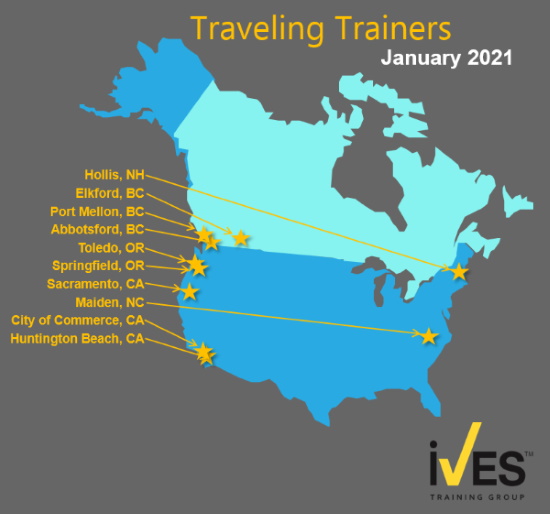
Jonathan Rosenfeld: OSHA forklift accident insights.
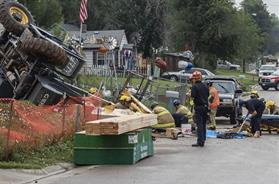 Jonathan Rosenfeld is an Illinois lawyer with a nationwide practice, Rosenfeld Injury Lawyers , representing people seriously injured or killed due to the irresponsible acts of an individual or company.
Jonathan Rosenfeld is an Illinois lawyer with a nationwide practice, Rosenfeld Injury Lawyers , representing people seriously injured or killed due to the irresponsible acts of an individual or company.
Forklift accidents are one of the more common possible violations reported to OSHA. This is in part because everyone working in the vicinity of the forklift may be in danger. In fact, the lesson that we learn from reviewing Occupational Safety and Health Administration accident investigation reports is of the wide variety of injuries that are suffered in this type of accident.
Both the forklift operator and their co-workers may be in jeopardy when these types of powered industrial trucks are being operated.
Department of Labor forklift accident data
Statistics compiled by the Bureau of Labor Statistics (BLS) show a relatively constant number of fatalities each year in the United States. From 2011 to 2017, between 75 and 94 workers were killed per year in forklift mishaps. An average of 7,000 workers annually were also hurt in these accidents.
There is no noticeable trend among these numbers, other than that they are constant and consistent. If you are looking for root causes of these accidents, they are usually a lack of proper training and oversight and a lax compliance with forklift safety.
While we can also look to OSHA accident reports as a source of statistics, not all accidents are reported to the government for further investigation. Nonetheless, we are able to see more description of the types of accidents that occur and how the government takes action against the employers that violate the rules.
Common types of forklift accident injuries
The largest category of forklift accident that injures employees is transportation accidents. Forklifts have the ability to overturn and tip over. When that happens, the forklift driver and people nearby can suffer severe injuries that can be fatal. Moreover, employees in the area are also at risk of being struck by forklifts.
Here are some common ways that employees can be injured by forklifts:
- Workers can be pinned between the forklift and another object or the wall.
- Employees can fall off a forklift.
- The forklift overturns, throwing the employee.
- The forklift can strike or run over another employee in the area.
Government rules to protect workers from a forklift accident
OSHA imposes a large number of safety rules on employers when it comes to the operation of forklifts. The government recognizes the danger of this industrial machinery and attempts to make sure that workers can remain safe on the job. Below are some of the applicable OSHA rules that employers must follow. 29 CFR 1910.178 contains the specific regulations relating to forklifts. Here are some of them: · All forklifts must meet certain design and safety standards. 29 CFR 1910.178(a)(2) High Lift Rider trucks shall be fitted with an overhead guard to prevent occupational injury 29 CFR 1910.178(e)(1)
- The employer shall ensure that each powered industrial truck operator is competent to operate a forklift safely by complying with training program requirements and safety management and safety programs specific to forklifts. 29 CFR 1910.178(l)(1)(i)
- Employers should not allow anyone to walk beneath the elevated portion of a truck. 29 CFR 1910.178(m)(2).
- Employees should also be provided with personal protective equipment.
These are just some of the pages and pages of regulations that OSHA has to keep forklift operators and people in the vicinity safe. Unfortunately, not all employers follow these rules.
Whether they are trying to cut corners to save money by cutting back on safety training or are just plain negligent, many employers end up violating the rules. When this happens, it can cause serious injuries and can cost lives.
OSHA accident investigation reports
We can also learn something about forklift accidents from looking at the OSHA investigation statistics and reports. There were 34 accident investigations completed by OSHA in 2019. In 27 of these accidents, there were fatalities.
This does not contradict the fatality data reported by the BLS that we discussed above. OSHA will usually investigate and take some sort of enforcement action when there is a serious injury or death. They will often show up in the case of workplace injuries.
In 2018, OSHA completed 75 accident investigations. The fatality rate in these accidents was much lower as only six of these incidents involved cases where workers were killed. This is not to say that there was any one specific factor that caused an overall increase in the number of forklift fatalities.
Nonetheless, given the rise of online shopping and the extensive use of warehouses, there are some increased risks for workers across the economy.
OSHA penalties for employers who broke the rules
Here are some different types of forklift injuries that come from reports of OSHA accident investigations:
- Penalty for USD15,900 from the South Carolina Office (Oct. 2019) - Workers were using a front-end loader to haul mulch material. There was a collision and a worker was pinned by the tire of a forklift. The employee suffered massive internal injuries and died six days later. The employer received five violation items, including three serious violations.
- Penalty for USD27,846 from the San Antonio Office (Jul. 2019) - The employee was operating a forklift with an attachment. The forklift tipped over, ejecting the employee from the cab of the forklift. He hit his head on the mast and was killed. The employer was found to have exposed the employee to an unsafe workplace with a crushing hazard.
- Penalty of USD19,322 from the Wichita Office (June 2019) - The employee was working for a company that was drilling residential water wells. He raised the mast of the forklift and it came into contact with overhead power lines. He was electrocuted and killed. The company was fined for violating several OSHA rules relating to electrical safety.
- Penalty of USD17,050 from the Dallas Office (May 2019) - An employee was driving a tugger. He drove into a forklift that was parked that had its forks raised. The tugger driver was killed in the collision. The employer was found to have committed two serious safety violations.
Legal options after a forklift mishap
Employees who are hurt in forklift accidents or their families need to figure out who and what was responsible for the forklift accident. If the accident resulted from a defect in the forklift, the family may file a product liability lawsuit against the forklift manufacturer.
If the accident was a result of gross negligence on the part of the employer, the employee or their estate may file a lawsuit against the employer outside of the workers' compensation system.
Source: www.forkliftaction.com
Cowal mine fall blamed on removed scissor lift guard rails.
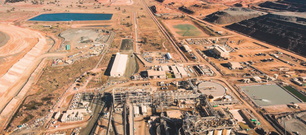 The New South Wales Resources Regulator has found that an accident at the Cowal gold mine in 2018 was caused by an attempt to access a scissor lift with removed guard rails.
The New South Wales Resources Regulator has found that an accident at the Cowal gold mine in 2018 was caused by an attempt to access a scissor lift with removed guard rails.
The accident resulted in spinal injuries to a contract worker after he fell one meter from the scissor lift before passing away in September as he succumbed to complications during surgeries.
The resources regulator also identified follow-up factors such as inadequate worker supervision; unauthorized plant modification; and failing to sufficiently define work methods, follow change management requirements and conducting a risk assessment when the new work method was proposed.
Although risk assessments were conducted before the removal of guard rails to move the scissor lift beneath a structural base, none of the assessments referred to risks associated with operating the scissor lift with the guards removed.
The worker was also not qualified to undertake work from a height, but was issued a harness to complete the task, which was not connected to the platform of the lift.
Investigations by the Incident Cause Analysis Method (ICAM) found that it was not uncommon for guard rails to be removed from scissor lifts when placing them into position.
However, ICAM did deem it uncommon to have staff operating the lift from the working platform with the rails removed when Australian New Zealand Standard 4024.1601 noted that it must be “securely fastened” to the work platform.
“The investigation found that had the workers walked the scissor lift under the steel support, this incident would have been prevented,” the regulator stated in the investigation report.
“It is recommended that mine operators and contractors review their procurement processes to ensure that mobile plant equipment is fit for purpose, having regard to the environment where it will be used.”
The regulator also recommended that procedures incorporate adequate risk management practices, staff allocations to be reviewed to show sufficient levels of site experience and workers to be educated about the degree of harm that could occur as a result of falls from heights.
Source: www.safetowork.com.au
Product Feature
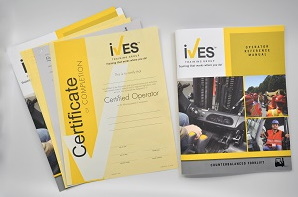
Our Operator Compliance Packages contain an equipment-specific operator reference manual, operator theory test, practical evaluation forms, certificate of completion and certification folder with data sheet and operator wallet card – enough material to train and document that process for one operator.
Operator Compliance Packages are available for counterbalanced forklifts, narrow aisle forklifts, powered pallet trucks, rough terrain forklifts, aerial boomlifts, scissor lifts, front-end loaders, loader backhoes, skid steer loaders and excavators.
Link to browse or purchase our Operator Compliance Packages.
Watch our Operator Compliance Packages video to learn more!
How to revamp training for heavy equipment operators.
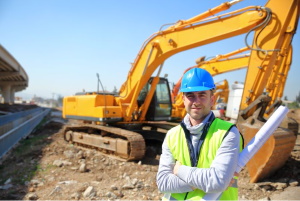 Heavy equipment is an integral part of many industries, but safe operation of this massive machinery requires comprehensive and consistent safety training. How can managers and supervisors strengthen their training programs to ensure operators and employees have the resources they need to stay safe on the job? Below are a few methods that could prove effective.
Heavy equipment is an integral part of many industries, but safe operation of this massive machinery requires comprehensive and consistent safety training. How can managers and supervisors strengthen their training programs to ensure operators and employees have the resources they need to stay safe on the job? Below are a few methods that could prove effective.
Create a culture of safety
Safety doesn't stop as soon as onboarding or training ends. It needs to weave throughout the business like an unbreakable chain tying everything together. Creating a culture of safety makes keeping the job site safe everyone's priority, from the highest-paid CEO to the newest hire.
Safety needs to be something that everyone is responsible for and works toward. Getting everyone involved means the management team needs to lead by example, adhering to the same safety standards they expect from their employees.
Understand that safety training isn't optional
The Occupational Safety and Health Administration (OSHA) has been ensuring and enforcing worksite safety since 1970. Since the inception of this organization, injuries and deaths on job sites around the country have dropped by more than 60%, but a large part of this is because safety training has stopped being optional.
That hasn't stopped accidents and fatalities from putting workers at risk, but comprehensive training has reduced the number of accidents dramatically.
Do on-site training
Traditional training often takes place in classrooms or offices, far away from the job sites where employees will be utilizing their new skills. This arrangement turns training into something separate from the job, making it far too easy for workers to forget the essential skills that will protect them.
Consider switching to an on-site training model, which allows employees to learn in a familiar environment. This setup can be valuable for companies offering continuing education for their teams — it puts safety into perspective and keeps it at the forefront of their minds. As a bonus, this sort of training can be more cost-effective because it eliminates the need for off-site facilities.
Establish top-to-bottom accountability
Training shouldn't be limited to operators or new employees. Create a structure of safety on a foundation of top-to-bottom accountability. That means supervisors and management — even CEOs and other corporate officials — should all participate in safety training.
This strategy has two potential benefits. First, it fosters that previously mentioned safety culture by keeping everyone involved. Second, it improves the skills of those in supervisory roles. It gives them the tools to recognize when operators are using best practices or taking more dangerous risks.
Incentivize best practices
When training a puppy, dog trainers use treats and positive reinforcement to get the best results. For many years, incentive programs were popular for reinforcing safety training — at least until OSHA issued a memorandum prohibiting employers from discriminating against employees because of on-the-job injury or illness reports. This new guideline doesn't mean that incentive programs are entirely off the table, however, just that they need a bit of a redesign.
Incentive programs, under OSHA's new regulations, need to be based on behavior rather than reporting. Managers may find it beneficial to offer incentives — whether those are monetary bonuses, days off, branded swag or other perks — for individuals who consistently use the best safety practices. Doing this can encourage them to continue their work and inspire other operators to mimic their behavior to achieve the same goals.
Include risk training
Traditional heavy equipment safety training often neglects some of the less-obvious risks that can make job site unsafe. These hazards include mental health concerns and cases of substance abuse. Safety training should feature courses on how employees can recognize the signs of these — both in themselves and in others — as well as resources to help workers address these concerns in the workplace.
Things like substance abuse and mental illness are often surrounded by a negative stigma that causes individuals to hide their conditions instead of seeking necessary help. On a job site, especially where heavy equipment is concerned, this can be incredibly dangerous. Break down the stigma by including mental health and wellness courses as a standard part of operator training.
Training best practices for equipment operators
When heavy equipment is involved, safety should be everyone's priority and responsibility. These tips can help supervisors and business owners revamp their current training protocols to ensure operators and employees make the most of their workplace education.
Source: www.ishn.com
Ask Bob
Free technical support for all IVES Certified Trainers!
Question:
Are seat belt extensions legal to be installed on forklifts? I cannot find an OSHA regulation stating that it is not allowed.
Answer:
Great question! You are correct: there is no specific regulation that covers seat belt extensions. The best answer is contact the dealer of your forklift and request the seat belt extension through them but be sure to ask them for documentation of any restrictions for the capacity on the seat/cowling, or what’s commonly called the hood.
Years ago when I worked for a forklift dealer, we had the same situation with a client and had to go to the manufacturer. The particular model of forklift they had did have a weight restriction for the engine cowling that the seat mounted to. It was not listed in any service or operations manuals, but we were able to get the documentation from the manufacturer. We were then able to supply the client with the weight restriction requirements and a seat belt extension.
It might be possible to use a seat belt extension as long as operators fall within the weight restrictions of the cowling so once again, be sure to check with your dealer.
Interesting Articles
Tree falls on excavator in Jones County, killing operator...more.
Malaysian villagers escape floods on excavator as 28,000 evacuated...more.
Man dies after skid steer loader gets trapped in manure pile in Central Minnesota...more.
Don Ahern and Michael Kneeland among ARA's latest Hall of Fame inductees...more.
Aerial lift hits powerline, catches fire during Christmas tree decorating...more.
Excavator master in China becomes star over stunt videos...more.
Excavator hiding 448 kilograms of MDMA leads to five arrests in Sydney and London...more.
Worker saves boy, 6, from 3rd-floor ledge using boomlift...more.
Ex-employee in stolen excavator causes $6.1M in damages at Mercedes factory...more.
Worker injured when boomlift makes contact with an overhead power line...more.
Florida man flies learjet with excavator like a toy plane...more.
Forklift pulled from sinkhole caused by water line break...more.
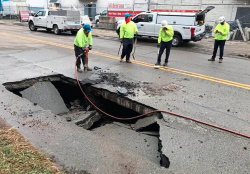
Client Testimonials

"Everything covered made sense and has given me a different perspective of how to be a competent trainer. The program and information was perfect." Xavier, Pride Conveyance.
"Class was enjoyable, learned a lot!" Jacki, E&J Gallo Winery.
"Program put together and presented in a manner that was easy to follow and made good sense. Great handouts and reference materials." Robert, Molson/Coors.
Did you enjoy this newsletter? Sign up for our newsletter to receive more like this!